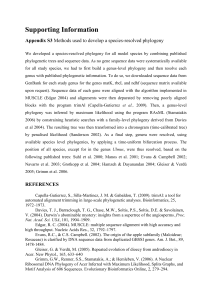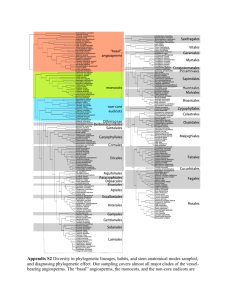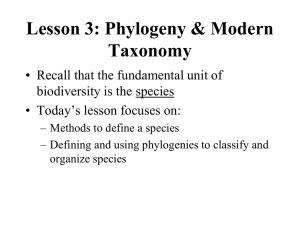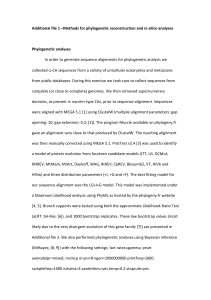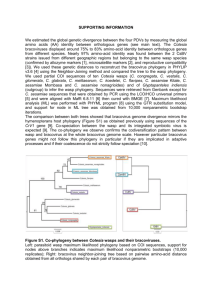jec12107-sup-0002
advertisement
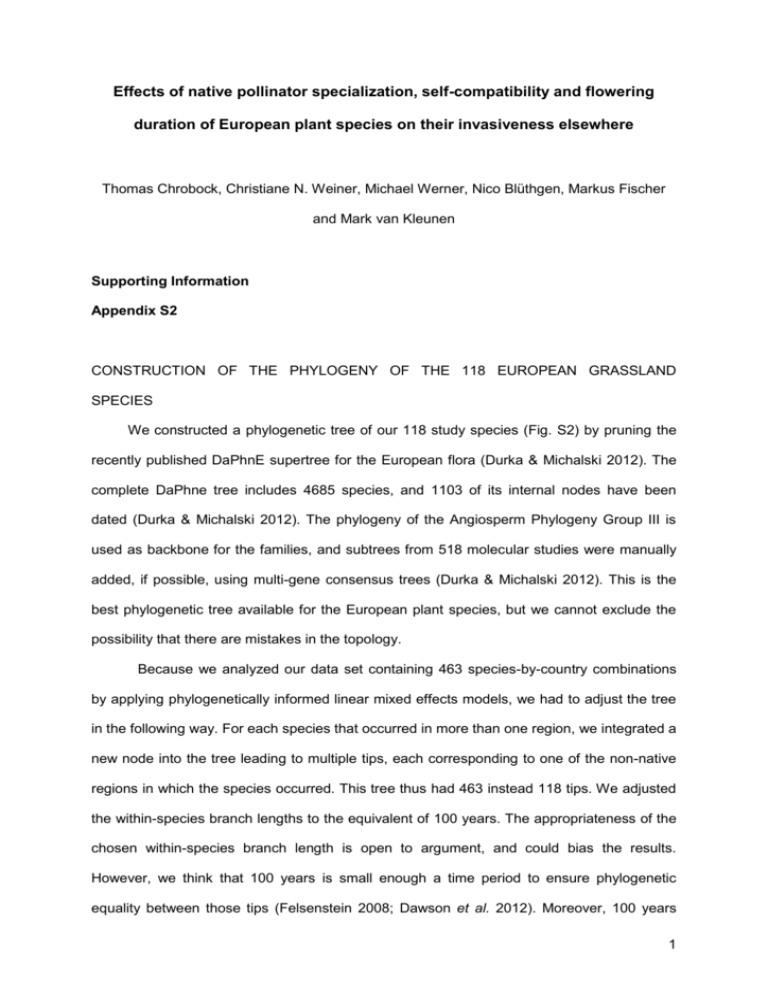
Effects of native pollinator specialization, self-compatibility and flowering duration of European plant species on their invasiveness elsewhere Thomas Chrobock, Christiane N. Weiner, Michael Werner, Nico Blüthgen, Markus Fischer and Mark van Kleunen Supporting Information Appendix S2 CONSTRUCTION OF THE PHYLOGENY OF THE 118 EUROPEAN GRASSLAND SPECIES We constructed a phylogenetic tree of our 118 study species (Fig. S2) by pruning the recently published DaPhnE supertree for the European flora (Durka & Michalski 2012). The complete DaPhne tree includes 4685 species, and 1103 of its internal nodes have been dated (Durka & Michalski 2012). The phylogeny of the Angiosperm Phylogeny Group III is used as backbone for the families, and subtrees from 518 molecular studies were manually added, if possible, using multi-gene consensus trees (Durka & Michalski 2012). This is the best phylogenetic tree available for the European plant species, but we cannot exclude the possibility that there are mistakes in the topology. Because we analyzed our data set containing 463 species-by-country combinations by applying phylogenetically informed linear mixed effects models, we had to adjust the tree in the following way. For each species that occurred in more than one region, we integrated a new node into the tree leading to multiple tips, each corresponding to one of the non-native regions in which the species occurred. This tree thus had 463 instead 118 tips. We adjusted the within-species branch lengths to the equivalent of 100 years. The appropriateness of the chosen within-species branch length is open to argument, and could bias the results. However, we think that 100 years is small enough a time period to ensure phylogenetic equality between those tips (Felsenstein 2008; Dawson et al. 2012). Moreover, 100 years 1 corresponds more or less to the period of time that many of the different naturalized populations of a species have been separated from the native populations and from naturalized populations in other regions of the world. 2 Fig. S2. Phylogenetic tree of the 118 European grassland species analyzed in this study. 3 References Dawson, W., Rohr, R.P., van Kleunen, M. & Fischer, M. (2012) Alien plant species with a wider global distribution are better able to capitalize on increased resource availability. New Phytologist, 194, 859-867. Durka, W. & Michalski, S.G. (2012) DaPhnE - a dated phylogeny of a large European flora for phylogenetically informed ecological analyses. Ecology, 93, 2297–2297. Felsenstein, J. (2008) Comparative methods with sampling error and within-species variation: contrasts revisited and revised. American Naturalist, 171, 713-725. 4

